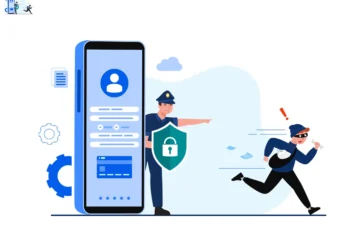In a world powered by digital technology, safeguarding your online presence is paramount. This article delves into the realm of cybersecurity, guiding you through the evolving cyber threat landscape and providing insights on how to protect your digital world.
The Evolving Cyber Threat Landscape
Malware’s Sneaky Tactics
Malware, or malicious software, comes in various forms, from viruses to ransomware. These digital threats can infiltrate your systems and steal sensitive information or render your devices useless. Cybercriminals constantly devise new, sophisticated techniques to breach your defenses.
Phishing Expeditions
Phishing attempts are akin to digital fishing expeditions. Cybercriminals craft deceptive emails and websites that mimic trusted sources. Their goal is to trick you into revealing sensitive data like passwords, credit card information, or personal details.
The Digital Defense Arsenal
Antivirus Solutions
You should use antivirus software as your primary line of defence. It scans your files, email attachments, and web downloads for malicious code. Regularly updating your antivirus ensures it can identify the latest threats.
Firewalls and Intrusion Detection Systems (IDS)
Firewalls act as a protective barrier between your network and potential threats, filtering out unauthorized access. Intrusion Detection Systems monitor network traffic for signs of suspicious activity, instantly alerting you to potential breaches.
VPNs for Secure Browsing
Your internet connection is encrypted by Virtual Private Networks (VPNs), protecting your data from snoopers. They’re invaluable when using public Wi-Fi or accessing sensitive information.
Security Beyond Software
User Education and Awareness
One of the most potent tools in cybersecurity is an informed user. Understanding common cyber threats, recognizing phishing attempts, and practicing good digital hygiene are essential.
Strong Password Practices
The keys to your digital kingdom are your passwords. Use complex, unique passwords for each account and employ a password manager to keep them secure.
The Importance of Regular Updates
Software Updates
Software developers frequently release updates to patch vulnerabilities. By not updating, you expose your machine to known security risks.
Patch Management
Patch management extends beyond your operating system. Applications and even hardware may require updates to ensure security.
The Rising Role of AI in Cybersecurity
Threat Detection and Response
AI and machine learning enable faster threat detection and response. They can analyze vast amounts of data to identify unusual patterns and potential threats.
Predictive Analysis
AI-driven predictive analysis can anticipate and mitigate potential security breaches, taking proactive steps to safeguard your digital world.
Conclusion
The digital world is a battlefield, and cybersecurity is your armor. By staying vigilant, educating yourself, employing robust defense mechanisms, and harnessing the power of AI, you can protect your digital world from the ever-evolving threats.
FAQs
What’s the biggest cybersecurity threat today?
Ransomware is a significant threat, where cybercriminals encrypt your data and demand a ransom for its release.
How can I recognize phishing emails?
Look for irregularities in the sender’s email address, typos, or strange requests. When in doubt, contact the sender using official contact information.
Why are regular software updates important for cybersecurity?
Patches for known vulnerabilities are frequently included in updates, lowering the risk of cyberattacks.
Is it safe to use public Wi-Fi without a VPN?
Public Wi-Fi is a prime target for cybercriminals. Using a VPN adds a layer of security by encrypting your connection.
How does AI help predict and prevent cybersecurity threats?
AI can analyze data to identify unusual patterns or behaviors, enabling it to detect potential threats and take proactive measures.



